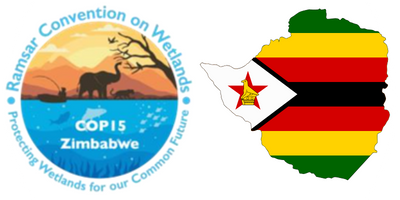Airport Reception and Transportation
All participants are expected to arrive in Victoria Falls (Zimbabwe) from the 20th of July 2025 depending on availability of flights.
The host Government will provide a meet-and-greet service at Victoria Falls Airport, where a dedicated conference protocol desk labelled with the conference banner will be clearly visible. Delegates are encouraged to arrange their transfers in advance to avoid any inconveniences, those needing assistance should get in touch with our transport committee on email, which will be provided soon
Delegations are requested to provide their travel itineraries for proper planning. There will be a receiving team at the airport to welcome all people coming for the event. Shuttle services will be available at designated conference hotels in the morning and after the conferences. Shuttle times will be advised in due course to confirmed delegates
Additional Travel Notes
Victoria Falls, also known as Mosi-oa-Tunya ("The Smoke That Thunders"), is a majestic waterfall located on the Zambezi River, straddling the border between Zambia and Zimbabwe. It's renowned for its sheer size and breathtaking beauty, making it one of the world's most iconic natural wonders.
The falls stretch across a width of 1,708 meters (5,604 feet) and plummet over a height of 108 meters (354 feet), creating a thunderous cascade of water that generates a massive cloud of mist. This mist, along with the rainbows it produces, adds to the spectacle of Victoria Falls.
The surrounding area is a haven for wildlife, with diverse ecosystems supporting a variety of animals, including elephants, hippos, crocodiles, and numerous bird species. Visitors can explore the falls from various vantage points, including the rainforest trail, the Devil's Cataract, and the Livingstone Island, offering unique perspectives of this natural marvel.
Victoria Falls is a UNESCO World Heritage Site and a major tourist destination, attracting visitors from all over the world who come to witness its awe-inspiring power and natural splendor.
Here are some of the must-do activities in Victoria Falls:
1. Witness the Majestic Victoria Falls:
Main Falls: The iconic view of the falls, where the Zambezi River plunges into a deep gorge.
Devil's Cataract: A powerful waterfall with a dramatic drop, offering stunning views.
Rainforest Trail: A scenic walk through lush rainforest, leading to various viewpoints of the falls.
2. Thrilling Adventures:
White-Water Rafting: Experience the adrenaline rush of navigating the Zambezi River's rapids.
Bungee Jumping: Leap off the Victoria Falls Bridge for an unforgettable experience.
Zip Lining: Soar through the Batoka Gorge, taking in breathtaking views of the falls.
Gorge Swinging: Swing over the edge of the gorge, feeling the rush of adrenaline.
3. Wildlife Encounters:
Zambezi River Cruise: Spot hippos, crocodiles, elephants, and various bird species on a scenic boat cruise.
Game Drives: Explore the surrounding national parks, such as Hwange National Park, to see lions, leopards, and other wildlife.
Opens in a new window
www.shearwatervictoriafalls.com
Zambezi River Cruise, Victoria Falls
4. Cultural Experiences:
The Boma Dinner and Drum Show: Enjoy a traditional African dinner and cultural performance.
Village Tours: Visit a local village to learn about the culture and traditions of the people.
Opens in a new window
www.visit-victoria-falls.com
Boma Dinner and Drum Show, Victoria Falls
5. Scenic Flights:
Helicopter Tour: Get a bird's-eye view of the falls and the surrounding landscape.
Remember to choose the activities that best suit your interests and comfort level. Victoria Falls offers a diverse range of experiences, ensuring an unforgettable adventure for everyone.
COP15 will bring together governments, NGOs, scientists, and other stakeholders to address critical issues related to wetland conservation and sustainable use. Together, we will work to secure the future of these vital ecosystems for generations to come.
Key Themes
- Wetland Restoration: Reversing wetland degradation and restoring their ecological functions.
- Climate Change and Wetlands: Understanding and addressing the impacts of climate change on wetlands.
- Sustainable Wetland Management: Promoting wise use of wetlands for human well-being and biodiversity conservation.
- Youth and Wetlands: Engaging young people in wetland conservation and sustainable development
